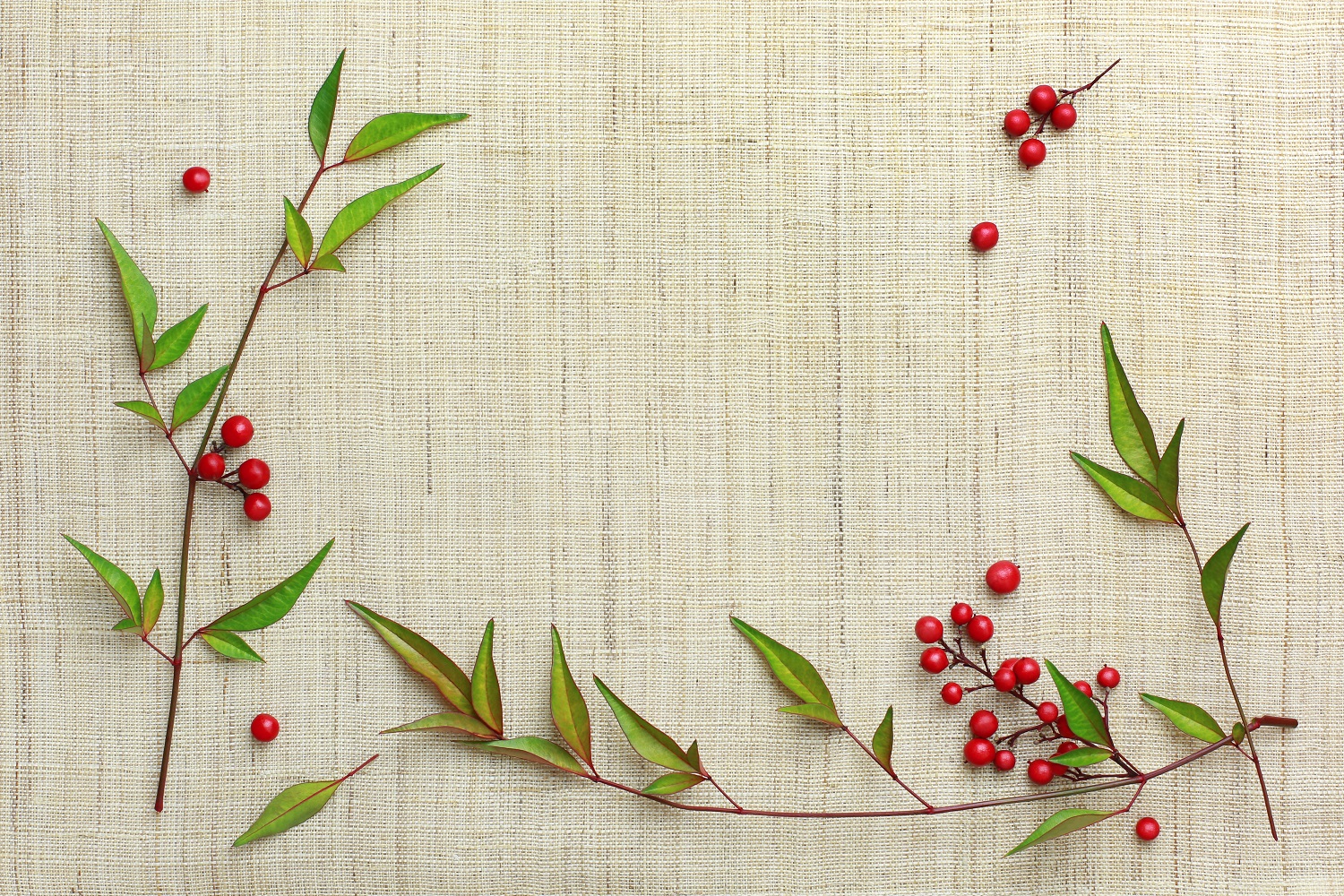
The nandina is one of the rare evergreen shrubs whose branches change color throughout the year.
Two dull tuyas, their branches frozen in an eternal green, looked defiantly at a small shrub that looked like bamboo. “What is that?” said one. A nandina,” replied the other. “What is this clown? It has not stopped changing the color of its leaves since the spring that I observe it!”, said the first, raising the branches to the sky in sign of incomprehension. “You’ll have to get used to it,” said the second, sighing, “because it’s not going to stop. And I’m not even telling you about the little white summer flowers that turn into red berries in the fall. Having a nandina in the neighborhood is a year-round carnival!”.
Fake bamboo
Nandina domestica, or sacred bamboo, is a small shrub native to Asia whose habit, because of its rigid stems that branch out rather little, makes it look like bamboo. In reality, it belongs to the Berberidaceaes family, which makes it a cousin of berberis or mahonia. If there is only one species of nandina, it is declined in about sixty cultivars in Japan, country where it enjoys a great fame. In France, there are only about ten of these varieties which differ mainly in size (from 60 cm to 2 m), bearing (compact or erect) and the colors of the foliage.
Real aesthetic assets
The nandinas with erect habit tend to be slightly bald at the base of the trunk, which gives them a very graphic shape of small Japanese tree. But it is especially by its effects of colors that the nandina distinguishes itself. It is one of the very few evergreen shrubs whose foliage changes throughout the season.
Its young shoots appear pink or red at the beginning of the season, then they turn pale green and slowly darken during spring and summer, before turning red and orange in autumn and winter. But that’s not all! Tiny white flowers with large yellow stamens appear in July in large conical panicles. They turn into small red berries in the fall, which are very decorative. Apparently not much appreciated by the birds, these remain on the plant for a long time, until they mix with the young leaves, and even sometimes, with the flowers of the following year.
Be careful, they are toxic.
Advice of culture
Even if there are hermaphrodite cultivars (Richmond for example), originally, the nadina is a dioecious species. That is to say that it is necessary to have a male plant to fertilize the female flowers and to obtain these famous berries so decorative in the heart of the winter. It is thus recommended, if you do not know the kind of the plants which you buy, to install several individuals in the garden, as the grouping of nandinas is often of the most beautiful effect. Contrary to what one thinks, it is a rather rustic shrub, which resists to prolonged frosts of -12 °C. On the other hand, it fears cold and drying winds, and it is better to install it well sheltered from them. It will bloom best in a sunny situation, but in the warmest regions, a half-shade exposure is preferable because it is not a fan of the burning sun. Nevertheless, in fresh soil, a well rooted nandina supports correctly the drought.
The king of the pots
Its growth being relatively slow and its tracing roots not requiring a too important depth of ground (40 cm), the nandina adapts perfectly to the culture in pot, what makes of it a really very interesting plant for the small gardens, the balconies and the terraces.
Densify the base
If you want to prevent the base of the trunk from becoming bald, prune regularly the low branches at half length so that they branch out.

